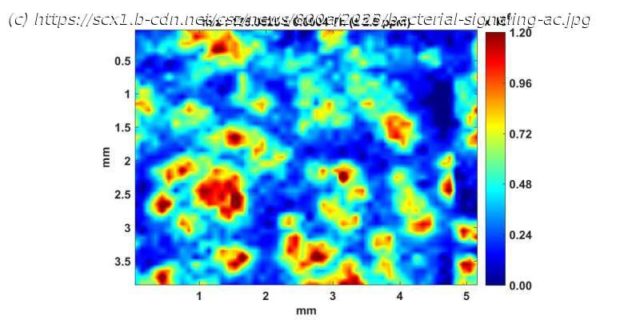Similar to how cells within human tissues communicate and function together as a whole, bacteria are also able to communicate with each other through chemical signals, a behavior known as quorum signaling (QS). These chemical signals spread through a biofilm that colonies of bacteria form after they reach a certain density, and are used to help the colonies scavenge food, as well as defend against threats, like antibiotics.
Similar to how cells within human tissues communicate and function together as a whole, bacteria are also able to communicate with each other through chemical signals, a behavior known as quorum signaling (QS). These chemical signals spread through a biofilm that colonies of bacteria form after they reach a certain density, and are used to help the colonies scavenge food, as well as defend against threats, like antibiotics.
«QS helps them to build infrastructure around them, like a city,» described Dharmesh Parmar, a postdoctoral researcher in the lab of Jonathan Sweedler (CABBI/BSD/MMG), James R. Eiszner Family Endowed Chair in the department of chemistry. «Biofilms have channels, which allow passage of nutrients, and information in the form of chemical signals. They also allow crosstalk between colonies if there’s a threat or the stress in the environment.»
Biofilm formation and the subsequent resistance to antibiotics can be especially dangerous for people with a weakened immunity or with diseases like cystic fibrosis (CF), which leads to a stagnant mucus surface inside the lungs that bacteria can more easily attach to. To better understand what surface factors influence or potentially inhibit biofilm formation in the presence of antibiotics, researchers from the Sweedler lab at the University of Illinois Urbana-Champaign, along with collaborators at the University of Notre Dame, measured rate of biofilm formation via QS in a bacteria commonly acquired in hospital infections, Pseudomonas aeruginosa.
P. aeruginosa forms biofilms rapidly on a variety of surfaces, which expedites when colonies start communicating using QS, and makes treatment with antibiotics difficult.






